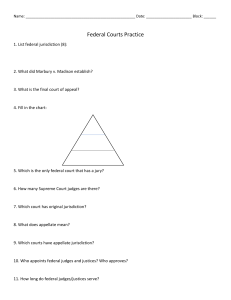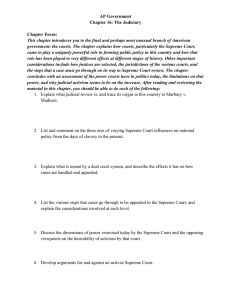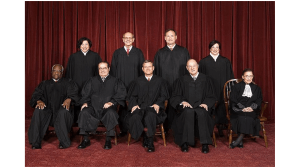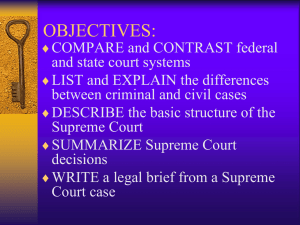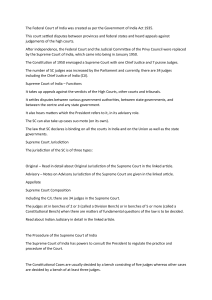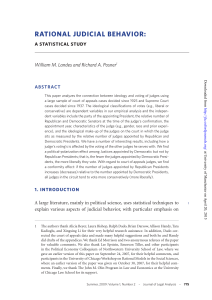The United States Supreme Court “The Court of Last Resort
advertisement
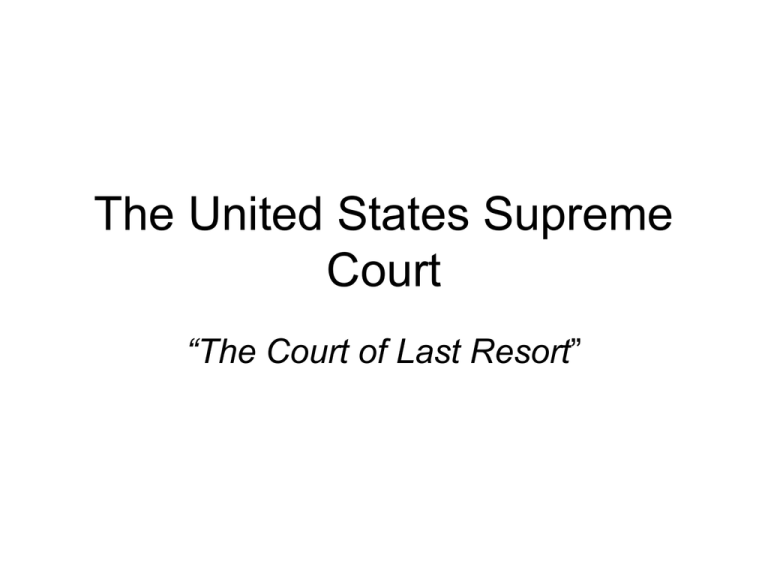
The United States Supreme Court “The Court of Last Resort” Article III of the Constitution • • • • 1 Supreme Court Life Tenure No Decrease in Salary Nominated by the President and Confirmed by the Senate • Impeachable by Congress Life Tenure What can influence a Supreme Court Justice? Legal Influences A.Constraints of the Facts They can only respond to the facts of the case B. Constraints of the Law Must determine which laws are relevant Political Influences A.Outside Influences Forces of public opinion+ B. Inside Influences Personal beliefs and political attitudes Article III section 2 Original Jurisdiction “Conducts Trials” –Disputes between states –Cases dealing with Ambassadors + Diplomats Appellate Jurisdiction Judiciary Act of 1789 Appellate Jurisdiction “Reviews Earlier Decisions” Has the authority to review cases from the lower courts. (Uphold or overturn) -Constitutional Issues -Great Social Impact Brown v. Board of Education Judiciary Act of 1789 Est. Lower Court Structure (1) U.S. Supreme Court (13) Circuits or Court of Appeals (94) District Courts (Trial Courts) 9 Supreme Court Justices • 1 Chief and 8 Associates Justices • Chief: John Roberts (Conservative) John Paul Stevens (Liberal) (Elena Kagan) Antonin Scalia (Conservative) Anthony Kennedy (Centrist) Sonia Sotomayor (Liberal) Clarence Thomas (Conservative) Ruth Bader Ginsberg (Liberal) Stephen Beyer (Centrist) Samuel Alito (Conservative) Case Loads District Courts 550 Judges 267,000 Cases Court of Appeals 158 Judges 41,000 cases Supreme Court 9 Judges 4,500 case (200 Decisions) 1990 statistics John Marshall http://www.youtube.com/watch?v=3TVkeRUvX_U
